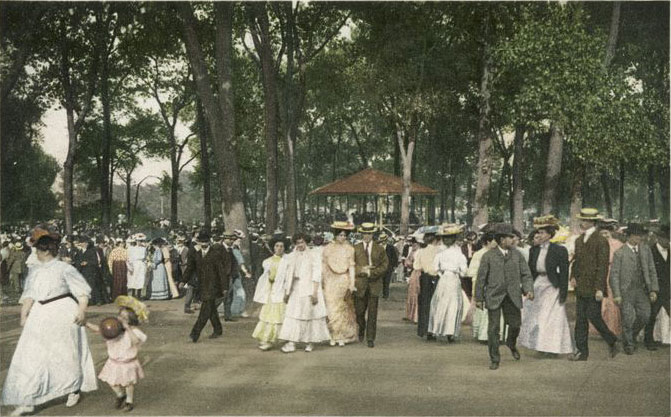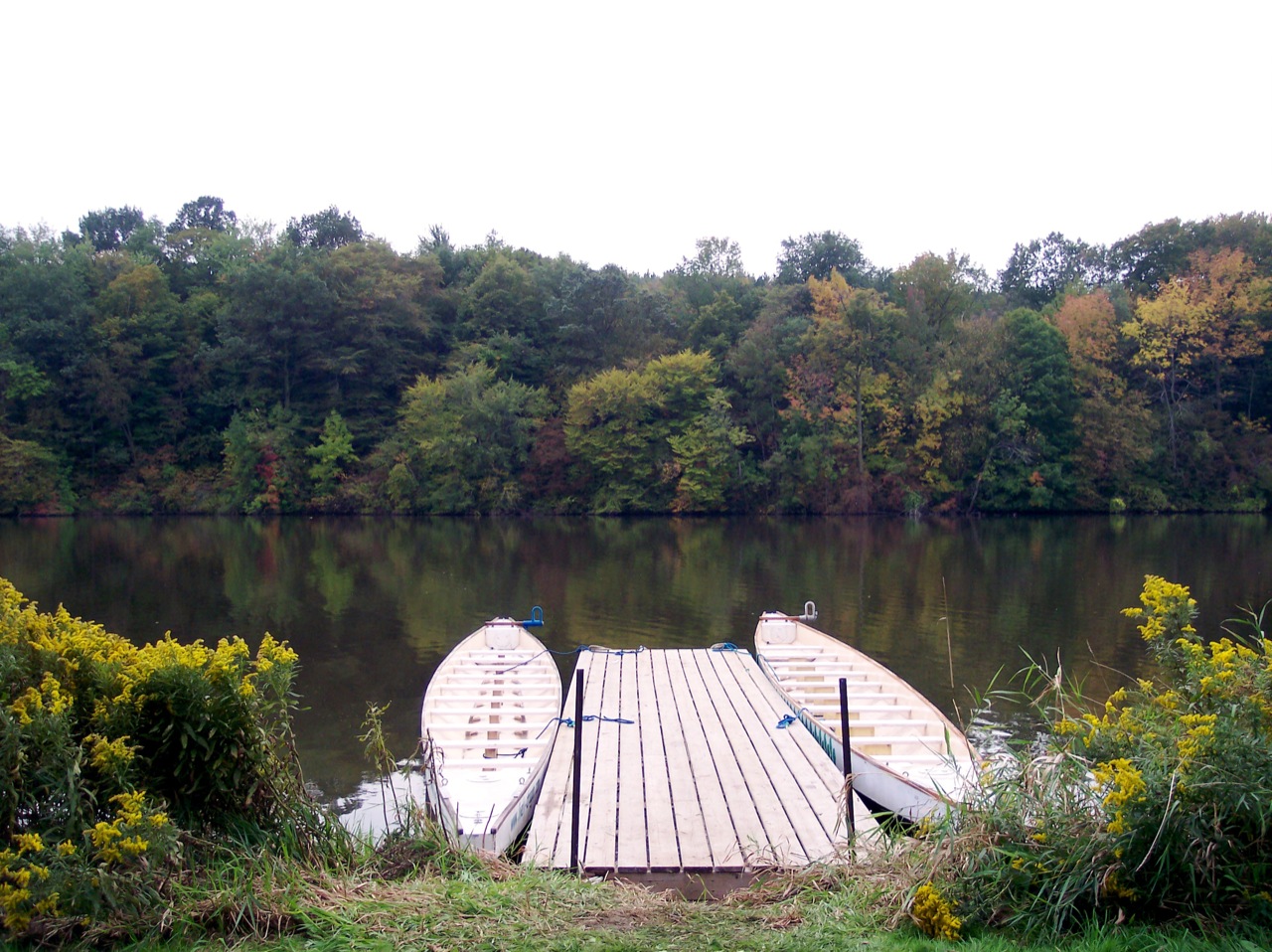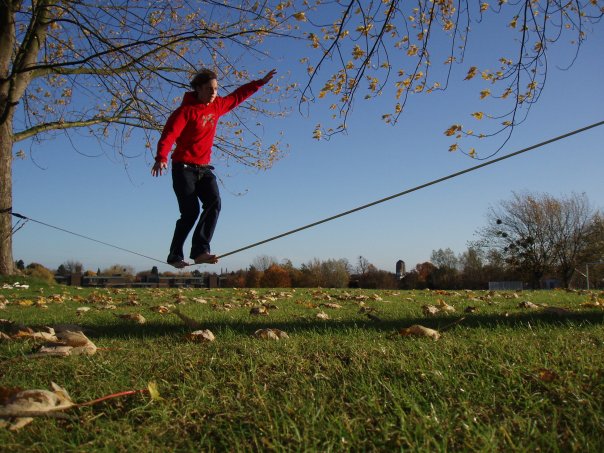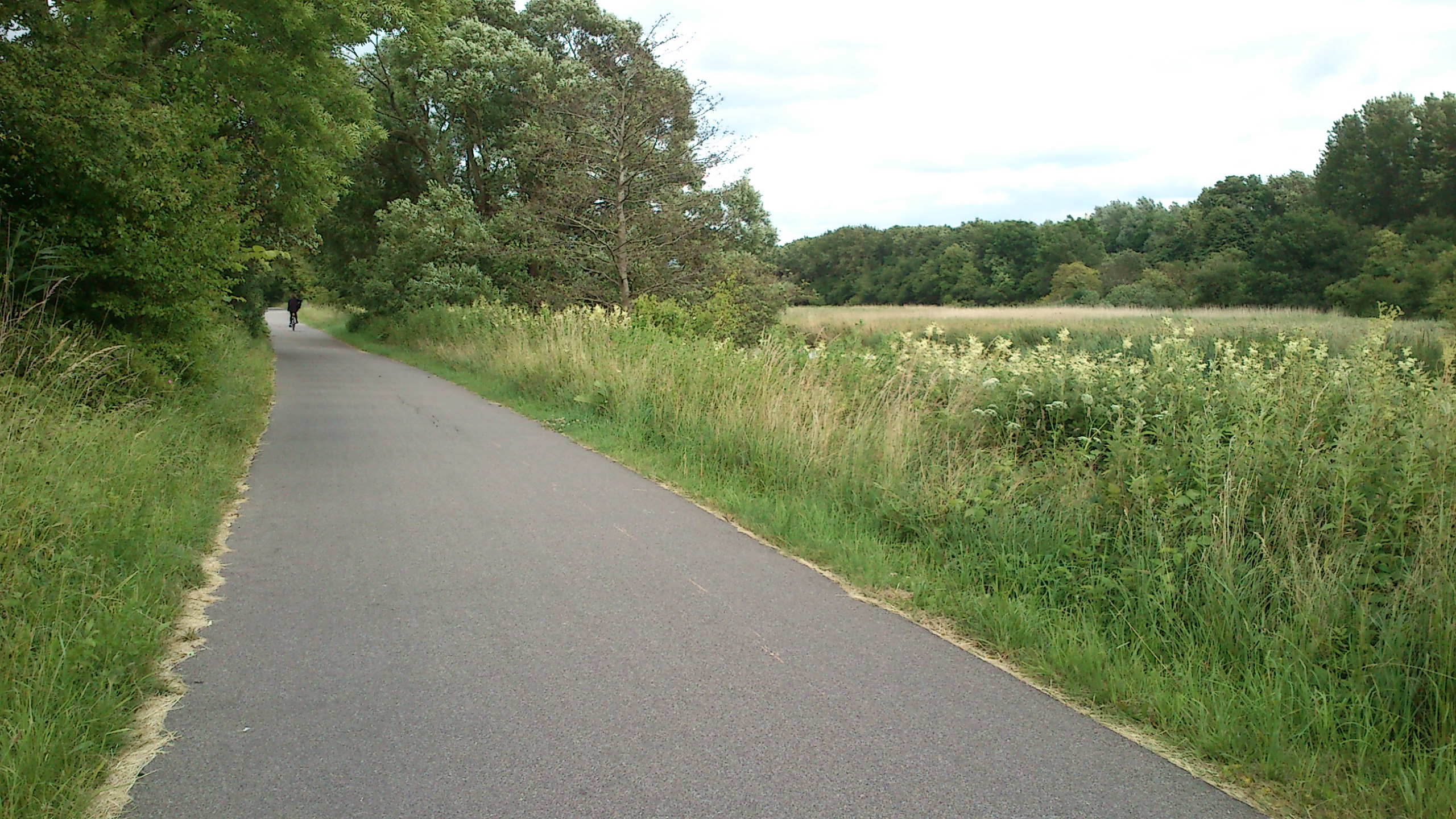|
Ă…parken
Ă…parken (The River-park) is a public park in central Aarhus, Denmark. The park is situated by the Aarhus River in the Vesterbro neighborhood in Midtbyen close to CeresByen, bounded by the streets ''Carls Blochs Gade'' and ''Thorvaldsensgade''. The park is divided by a central pedestrian pathway which runs from the urban center and connects to the recreational path ''Brabrandstien'' towards the west, circumventing Brabrand Lake area. Ă…parken is the first of a number of green areas extending from the city centre along the river and the pathway of ''Brabrandstien''. The long distance "Aarhus-Silkeborg hiking route" starts off from Ă…parken. The park is an open grassy area with a few trees and raised flower beds of mixed wildflower. The park contains a number of recreational and play facilities, including a slack lining, hammocks, climbing walls and a berth for canoes, kayak ] A kayak is a small, narrow human-powered watercraft typically propelled by means of a long, d ... [...More Info...] [...Related Items...] OR: [Wikipedia] [Google] [Baidu] [Amazon] |
Aarhus
Aarhus (, , ; officially spelled Ă…rhus from 1948 until 1 January 2011) is the second-largest city in Denmark and the seat of Aarhus municipality, Aarhus Municipality. It is located on the eastern shore of Jutland in the Kattegat sea and approximately northwest of Copenhagen. Dating back to the late 8th century, Aarhus was founded as a harbour settlement at the mouth of the Aarhus River and quickly became a trade hub. The first Christian church was built here around the year 900 and later in the Viking Age the town was fortified with defensive ramparts. The Ancient See of Aarhus, bishopric of Aarhus grew steadily stronger and more prosperous, building several religious institutions in the town during the early Middle Ages. Trade continued to improve, although it was not until 1441 that Aarhus was granted market town privileges, and the population of Aarhus remained relatively stable until the 19th century. The city began to grow significantly as trade prospered in the mid-18 ... [...More Info...] [...Related Items...] OR: [Wikipedia] [Google] [Baidu] [Amazon] |
Urban Park
An urban park or metropolitan park, also known as a city park, municipal park (North America), public park, public open space, or municipal gardens (United Kingdom, UK), is a park or botanical garden in cities, densely populated suburbia and other municipal corporation, incorporated places that offers open space reserve, green space and places for recreation to residents and visitors. Urban parks are generally Landscape architecture, landscaped by design, instead of lands left in their natural state. The design, operation and maintenance, repair and operations, maintenance is usually done by government agencies, typically on the local government, local level, but may occasionally be contracted out to a park conservancy, "friends of" group, or private sector company. Depending on size, budget, and land features, which varies considerably among individual parks, common features include playgrounds, gardens, hiking, running, fitness trails or paths, bridle paths, sports fields and c ... [...More Info...] [...Related Items...] OR: [Wikipedia] [Google] [Baidu] [Amazon] |
Kayak
] A kayak is a small, narrow human-powered watercraft typically propelled by means of a long, double-bladed paddle. The word ''kayak'' originates from the Inuktitut word '' qajaq'' (). In British English, the kayak is also considered to be a kind of canoe. There are countless different types of kayaks due to the craft being easily adaptable for different environments and purposes. The traditional kayak has an enclosed deck and one or more cockpits, each seating one occupant or kayaker, differentiating the craft from an open-deck canoe. The cockpit is sometimes covered by a spray deck that prevents unwanted entry of water from waves or splashes. Even within these confines, kayaks vary vastly in respect to materials, length, and width, with some kayaks such as the sprint kayak designed to be fast and light, and others such as the whitewater kayak designed to be sturdy and maneuverable. Some modern paddlecrafts, which still claim the title "kayak", remove integral parts of ... [...More Info...] [...Related Items...] OR: [Wikipedia] [Google] [Baidu] [Amazon] |
Canoe
A canoe is a lightweight, narrow watercraft, water vessel, typically pointed at both ends and open on top, propelled by one or more seated or kneeling paddlers facing the direction of travel and using paddles. In British English, the term ''canoe'' can also refer to a kayak, whereas canoes are then called Canadian (canoe), Canadian or open canoes to distinguish them from kayaks. However, for official competition purposes, the American distinction between a kayak and a canoe is almost always adopted. At the Olympics, both conventions are used: under the umbrella terms Canoe Slalom and Canoe Sprint, there are separate events for canoes and kayaks. Culture Canoes were developed in cultures all over the world, including some designed for use with sails or outriggers. Until the mid-19th century, the canoe was an important means of transport for exploration and trade, and in some places is still used as such, sometimes with the addition of an outboard motor. Where the canoe play ... [...More Info...] [...Related Items...] OR: [Wikipedia] [Google] [Baidu] [Amazon] |
Berth (moorings)
A berth is a designated location in a port or harbour used for mooring vessels when they are not at sea. Berths provide a vertical front which allows safe and secure mooring that can then facilitate the unloading or loading of cargo or people from vessels. Locations in a port Berth is the term used in ports and harbors for a designated location where a vessel may be moored, usually for the purposes of loading and unloading. Berths are designated by the management of a facility (e.g., port authority, harbor master). Vessels are assigned to berths by these authorities. Most berths are alongside a quay or a jetty (large ports) or a floating dock (small harbors and marinas). Berths are either general or specific to the types of vessel that use them. The size of the berths varies from for a small boat in a marina to over for the largest tankers. The rule of thumb is that the length of a berth should be roughly 10% longer than the longest vessel to be moored at the berth. B ... [...More Info...] [...Related Items...] OR: [Wikipedia] [Google] [Baidu] [Amazon] |
Hammock
A hammock, from Spanish , borrowed from TaĂno language, TaĂno and Arawak language, Arawak , is a sling made of fabric, rope, or netting, suspended between two or more points, used for swing (seat), swinging, sleeping, or Human relaxation, resting. It normally consists of one or more cloth panels, or a woven network of twine or thin rope stretched with ropes between two firm anchor points such as trees or posts. Hammocks were developed by native inhabitants of the Americas for sleeping, as well as the English people, English. Later, they were used aboard ships by sailors to enable comfort and maximize available space, by explorers or soldiers travelling in wooded regions and eventually by parents in the early 1920s for containing babies just learning to crawl. Today they are popular around the world for relaxation; they are also used as a lightweight bed on camping trips. The hammock is often seen as a symbol of summer, leisure, recreation, relaxation and simple living, simple, ... [...More Info...] [...Related Items...] OR: [Wikipedia] [Google] [Baidu] [Amazon] |
Slack Line
Slacklining is walking, running or balancing along a suspended length of flat webbing that is tensioned between two anchors. Slacklining is similar to slack rope walking and tightrope walking. Slacklines differ from tightwires and tightropes in the type of material used and the amount of tension applied during use. Slacklines are tensioned significantly less than tightropes or tightwires in order to create a dynamic line which will stretch and bounce like a long and narrow trampoline. Tension can be adjusted to suit the user, and different webbing may be used in various circumstances. Styles of slacklining Tricklining Tricklining has become the most common form of slacklining because of the easy setup of slackline kits. Tricklining is often done low to the ground but can be done on highlines as well. A great number of tricks can be done on the line, and because the sport is fairly new, there is plenty of room for new tricks. Some of the basic tricks done today are walking, w ... [...More Info...] [...Related Items...] OR: [Wikipedia] [Google] [Baidu] [Amazon] |
Wildflower
A wildflower (or wild flower) is a flower that grows in the wild, rather than being intentionally seeded or planted. The term implies that the plant is neither a hybrid nor a selected cultivar that is any different from the native plant, even if it is growing where it would not naturally be found. The term can refer to the whole plant, even when not in bloom, and not just the flower. "Wildflower" is an imprecise term. More exact terms include: * native species naturally occurring in the area (see flora) * exotic or introduced species not native to the area, including ** invasive species that out-compete other plants, whether native or not ** imported (introduced to an area whether deliberately or accidentally) ** naturalized (imported, but come to be considered by the public as native) In the United Kingdom, the organization Plantlife International instituted the "County Flowers scheme" in 2002; see County flowers of the United Kingdom for which members of the public nomin ... [...More Info...] [...Related Items...] OR: [Wikipedia] [Google] [Baidu] [Amazon] |
Brabrand Lake
Brabrand Lake () is a lake in the district of Brabrand (Gellerup), west of Aarhus city, Denmark. The Aarhus River passes through Brabrand Lake and it is possible to canoe all the way to the inner city from here. The lake is oblong-shaped. Since 2003, Brabrand Lake has been steadily extended 3–4 km further west, with the new lake of Årslev Engsø (lit.: Årslev meadow-lake). In 2001–2, it was politically decided to abandon the artificial draining of the meadows and as of 2013, Årslev meadow lake has a surface area of around . The total area including adjoining meadows and reed beds totals . It is hoped that Eurasian bittern and otter will find themselves a new home here with time. In everyday parlance, "Brabrand Lake" is a general term including the surroundings as well, indicating a total area of around with for the lake alone. A special Natura2000 protected area under the European Union, Brabrand Lake is home to a large variety of birds and an important resting p ... [...More Info...] [...Related Items...] OR: [Wikipedia] [Google] [Baidu] [Amazon] |
Silkeborg
Silkeborg () is a Denmark, Danish town with a population of 52,571 (1 January 2025).BY3: Population 1. January by urban areas, area and population density The Mobile Statbank from Statistics Denmark Silkeborg is the seat of Silkeborg Municipality, with a population of 101,574 as of 2025. Silkeborg is located in the middle of the Jutlandic peninsula, slightly west of the geographical centre of Denmark. The city is situated on the Gudenå, Gudenå River in the hilly and lush landscape of Søhøjlandet, surrounded by Denmark's largest forest district and a great number of lakes. Silkeborg is also known as Denmark's outdoor capital. The lakes between Silkeborg and Ry, Denmark, Ry that are linked by the Gudenå, are known collectively as ''Silkeborgsøerne'' (the Silkeborg lakes). The city ... [...More Info...] [...Related Items...] OR: [Wikipedia] [Google] [Baidu] [Amazon] |
CeresByen
CeresByen (English: ''CeresCity'') is a neighbourhood in Midtbyen, a district of the city of Aarhus, Denmark. It is a mixed residential and commercial area, comprising the site of the former Ceres Brewery operating here from 1856 until November 2008. The outer edges of CeresByen are defined by the streets ''Thorvaldsensgade'', ''Silkeborgvej'', ''Dollerupvej'' and ''Ceres Allé''. The neighbourhood is characterized by densely situated apartment buildings, high-rises, and an open public park along the Aarhus River. Architecturally, the area is modern while taking into account a few remaining and listed historic 19th century buildings of the former Ceres Brewery. The height has been kept relatively low, due to the proximity of nearby open-air museum Den Gamle By, and underground carparks have been constructed to save precious space. The '' Ceres Panorama'' residential building, completed in 2016, is one of the tallest in the city. History Royal Unibrew closed the Ceres Brewery ... [...More Info...] [...Related Items...] OR: [Wikipedia] [Google] [Baidu] [Amazon] |
Midtbyen, Aarhus
Midtbyen (lit. "The Mid-town"), also known as Aarhus Center or City, is the inner part of Aarhus. Midtbyen is part of district Aarhus C, mainly with postal code 8000, together with Vesterbro, Nørre Stenbro Trøjborg and Frederiksbjerg and has a population of around 90000. Midtbyen is characterized by narrow, winding, cobbled streets and a busy street life, with many small squares, cafés and shops. Parts of the old town center has been saved and protected from destructive modern development and can be experienced in the neighbourhood of Latinerkvarteret, but old individual listed houses are scattered all across Midtbyen. A large part of the area is carfree and the neighborhood has been increasingly pedestrianised. The square of Store Torv (lit.: ''large square'') in front of the cathedral, forms a natural centre of the large pedestrian zone. The stream of Aarhus Å flows through Midtbyen and adds to the areas' distinct charm. The waterway was covered by roads for many dec ... [...More Info...] [...Related Items...] OR: [Wikipedia] [Google] [Baidu] [Amazon] |









